Blogs
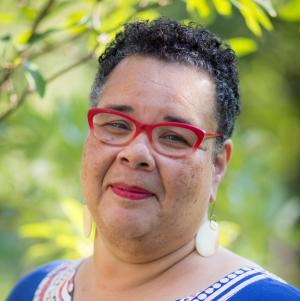
Training students to identify and traverse the identity politics in the United States begins on the first day of my courses. On day one, I introduce myself, then launch into the syllabus review. In describing the required readings, I hold the book or article in my hand, tell students the kind of text it is (fiction, non-fiction, etc.), then I discuss the author. I identify the race and gender of the author, and give a description of the author’s work in and beyond scholarship. And then I tell the students my rationale for selecting this author and particular text for our conservation. Last year, during this part of the syllabus rehearsal, a white woman student, who I will call Sara, raised her hand while I was waxing on about the authors. Sara (age 50ish, married, middle to upper class, suburban mom of three teen-aged children, devoted church member and avid Jets fan, self-identified as politically liberal) asked that I stop identifying the race of the authors. I have paraphrased this interaction in the following vignette: Sara said, in a chastising tone, “The race of the authors does not matter. We should read the books regardless of the person’s race.” I responded, “In our classroom conversation, my race matters, your race matters, and the races of the authors matter. Our voices and our perspectives, our values, our behaviors, and our beliefs are directly connected to our racial identity. No author writes for all people or from a universal perspective. We have to be aware of their perspective to better understand their work.” Sara looked puzzled. I continued, “Sara, when you look at my face do you see the face of an African American woman?” Immediately, Sara looked suspicious. She strained for what to say. She did not know if she should say she saw my race or if she should say she did not see my race. Sara said, “I don’t think of you as a black person. I think we should just be people.” Sara gestured as if she had said something obvious. In my mind, I heard her say, “I think we all should just be white people…. normal people . . . just plain people.” I said, “My race informs me and to ignore my race is to ignore my voice, as well as the voices of my people. Please know that I like being an African American woman. I embrace our ways, wit, and wisdom.” Sara’s face became quizzical, like she was considering something new and for the first time. I continued, “I think of you as a white woman.” This soft statement hit her with a jolt. Sara’s shock gave way to dismay – she frowned. Seeing her alarm, I suggested that she hold her concern for later in the semester. I went back to my syllabus rehearsal. When I entered the classroom for the second session, Sara was seated. As I unpacked my briefcase she came up to talk with me. She reported that while she enjoyed reading the African American woman author, bell hooks (our first assigned reading), she did not think hooks was talking to her. Sara said, “I just think bell hooks has such a different perspective . . . I am not sure why this book is assigned for this class.” I told Sara to “hang-in” with the conversation – it was just the beginning. On the last day of class, as Sara walked out of the door she thanked me for the “nice” course. Her hollow pleasantry reminded me of the way a tourist, while leaving the tram-ride, thanks the guide at the end of the amusement park safari. I thought of James Baldwin. James Baldwin, acclaimed novelist, legendary essayist, and important human rights champion said, “Not everything that is faced can be changed, but nothing can be changed until it is faced.” I made a mental note to include writings by Baldwin the next time I taught this course. I love Baldwin’s use of the word face(d). It means to confront, challenge, provoke, even threaten or defy. He is also not so subtly suggesting that people need, if societal change is to be given a chance, to turn and face one another. Baldwin suggests that relationships of respect, decency, decorum, and dignity will change the world for the better, if we have the fortitude, tenacity, and care to make the attempt.The politics of the face is serious territory. The police do not take a mug shot of your feet or elbows. We are known by our faces. We face the world with our faces. Most racial profiling happens in the nanosecond it takes to gaze upon the face. The Sweat on their Face: Portraying American Workers, an exhibit of the Nation Portrait Gallery at the Smithsonian, says, “the face is the primary canvas of the story of our lives.” I agree. Once Sara signaled on the first day that conversations on social hatred were new to her and that she lacked the experience of challenging the social lies she had internalized, I watched for moments of particular distress and discomfort through the arch of our semester-long conversation. From my recollection, here are the three teachings that also shook Sara: #1) Just as victims of rape are not experts in the crime of rape or experts on rapists, so African American people, with our experience of violation, dehumanization, and oppression are not experts in the sin of racism or the contributing systems of oppression. We are typically, and rightfully so, reactionary. Reactionary is not the same as critically reflective. Please do not expect African American people to inform you about the intricacies of racism. Surviving racism does not equip one to teach about racism. Consult well-informed and mindful white persons who are aware, repentant, and doing the work of equity. There are many people. #2) Even with the sophistication and technological advancements of the 21st century, many white people still do not think they have a race. They still think race is for “other-ed” people – people of brown-hued skin or simply black people. Even so, white people typically do not hesitate, on a census form, to tick the box for Caucasian or white. Given the choices of Asian, Hispanic, African American or mixed they can declare they are white. Other than selecting that box, the everyday behavior is usually one of tension, anxiety, nervousness or just plain confusion about issues of race and racial identity. They still believe that their racelessness is just being “normal.” The politics of this identity-delusion is debilitating to non-white people. #3) The USA has exported its systemic prejudices and social hatreds around the world. As an American traveling overseas, being African American has mattered sometimes in dangerous and unpleasant ways. Being an African American has made me a novelty in Japan, an oddity in Korea, a target in Jamaica, an object of suspicion in Ireland and Israel, beloved in Ghana and ogled-at in France. The emotional outpouring, from rage to reverence, was at times overwhelming. The world is quite aware of the racist and stereotypical narratives of blackness in the USA and, for the sake of power and prestige, has chosen to embrace them. As an African American traveling abroad, I was a spectacle, an embodiment of the racist narrative. I was a spectacle as in celebrity or spectacle as in despised – all expressions of objectification, commodification, and all quite scary. Racism in the USA makes it difficult for African Americans to travel the world. It was challenging for Sara to understand that our goal is never to overcome all differences (being post-Obama is not the same as being post-racial), since God clearly created our spectrum of differences. God loves our faces in all their many colors, textures, shapes and sizes. It is when differences are deemed to be deficiencies that the problem of other-ing occurs. When whiteness and maleness are considered “normal” then any person not white and not male are, by base logic, abnormal and inferior. This white supremacist mentality undergirds and maintains social systems which control, sort, are suspicious of, exploit, criminalize or eradicate (quickly or slowly) those who are deemed as other. Facing this reality is our liberation – mine as well as Sara’s. The Saras of our time are uncomfortable when the lies of the melting pot and assimilation are exposed, countered and rejected. There is great resistance in allowing the voice of someone who has been othered (bell hooks and me) to speak our perspective. There is surprise, dismay and disorientation to learn that those who have been othered have a perspective of merit, even a perspective that is potentially revelatory. Allowing an Other’s perspective to decentralize previously un-contested norms, values and beliefs takes time, prayer, and patience. As we wait, we must acknowledge that until it is faced we will not be able to find our way forward. I have an urgency about this.
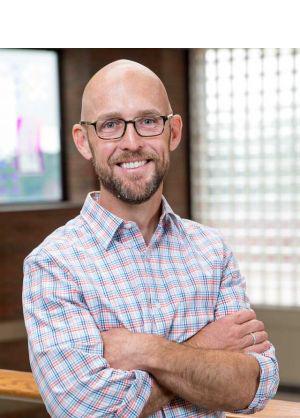
Theological education centers on attention. Attending to another person’s thoughts, their arguments, their conceptions – studying, parsing, comparing, etc. This is not a novel claim. The Jewish philosopher Simone Weil, however, claims that there is more going on as we work out a geometry problem, tussle over a difficult argument, or wade through a difficult theological text. Attention in academic studies, she argues, trains us for prayer and for loving our neighbors (“Reflections on the Right Use of School Studies with a View to the Love of God” in Waiting for God, 57-66). Weil implies that attention is like a muscle. Giving attention to academic studies trains that muscle so it can be flexed by attending to God in prayer and attending to our others in love. Prayer first. Contemplation consists of attention: “the orientation of all the attention of which the soul is capable toward God.” Studies train that muscle. More is therefore happening when we carefully attend to the thoughts of others in the theological classroom. Even a geometry problem can accomplish this. If we have no aptitude or natural taste for geometry, this does not mean that our faculty for attention will not be developed by wrestling with a problem or studying a theorem. On the contrary, it is almost an advantage. … Never in any case whatever is a genuine effort of the attention is wasted. It always has its effect on the spiritual plane and in consequence on the lower one of the intelligence, for all spiritual light lightens the mind. If we concentrate our attention on trying to solve a problem of geometry, and if at the end of an hour we are no nearer to doing so than at the beginning, we have nevertheless been making progress each minute of that hour in another more mysterious dimension. Without our knowing or feeling it, this apparently barren effort has brought more light into the soul. The result will one day be discovered in prayer. What is Weil doing? She is shifting the telos of study according to her religious imagination. “Students must therefore work without any wish to gain good marks, to pass examinations, to win school successes.” Rather, “applying themselves equally to all their tasks, with the idea that each one will help to form in them the habit of that attention which is the substance of prayer . . . To make this the sole and exclusive purpose of our studies is the first condition to be observed if we are to put them to the right use.” The telos of study—good marks or the aptitude for prayer—orients the student’s motivation and intention. Now love for others. Love for our neighbors is also served through academic studies. Weil’s argument tracks along the same lines as before. Love requires attention. Thus, by training our attention-muscles through academic studies, we are better able to flex those muscles toward our neighbors. She explains: Not only does the love of God have attention for its substance; the love of our neighbor which we know to be the same love, is made of this same substance. Those who are unhappy have no need for anything in this world but people capable of giving them attention. The capacity to give one’s attention to a sufferer is a very rare and difficult thing; it is almost a miracle; it is a miracle. Nearly all those who think they have this capacity do not possess it. Warmth of heart, impulsiveness, pity are not enough. . . . Only he who is capable of attention can do this. So it comes about that paradoxical as it may seem, a Latin prose or a geometry problem, even though they are done wrong, may be of great service one day, provided we devote the right kind of effort to them. Should the occasion arise, they can one day make us better able to give someone in affliction exactly the help required to save him, at the supreme moment of his need. If Weil is right (I believe she is) then we could say something bold like this: careful, patient, and deliberate attention to the thoughts, arguments, and conceptions of others can serve not only the cultivation of one’s abilities as a theologian, but also one’s capacity for loving attention to God and others. We are bombarded today with distraction and constantly lured with promises of entertainment, but wouldn’t it be wonderful if theological education were forming persons fit for contemplation? Today, partisanship and fear so quickly divides us, but wouldn’t it be wonderful if theological education were forming citizens capable of compassion? What if – dare we dream – that through attention, theological education could train us for love?

Alice laughed. “There’s no use trying,” she said: “one can’t believe impossible things.” “I daresay you haven’t had much practice,” said the Queen. “When I was your age, I always did it for half-an-hour a day. Why, sometimes I’ve believed as many as six impossible things before breakfast.” -- Lewis Carroll, Through the Looking Glass The matter-of-factness of the Queen’s statement about believing impossible things is her formidable strength. My contribution to a society that must take seriously its issues of inclusion, equity, eradication of poverty, economic justice, and ecological ruin is showing my students that belief in impossible things is their prophetic obligation. I want to teach my students to be more like the Queen, and less like Alice. The current hegemonic reality would have us believe that the current state of things is all there is. And, how it is now is as it should be – and anything else is impossible. We are distracted from imagining a world of communal mindedness and cooperation. We are taught that justice is impossible, improbable, and, I dare say, imprudent. For some students, the challenge to believe impossible things is the immediacy of being taught by an African American, female professor who has, by the position she holds in the school, authority over them. “How is it possible,” I hear them attempting to reconcile their cognitive dissonance, “that a person deemed by society to be inferior can be in this place of higher education? She must be a credit to her race; She must be an Affirmative Action hire; she must have slept with somebody to get this kind of job.” For other students, the challenge to believe impossible things is when they see someone like themselves–same racial identity, same gender, same hair texture, and possessing the same ability to suck my teeth and roll my eyes like a champ. “How is it possible,” I hear them attempting to reconcile their confusion, “that a person like Her can be in this place of higher education? She must think she’s white. She must have left the church–she ain’t Christian. She must be sleeping with somebody to get this kind of job.” If I can press past the immediate narrowness of some students when gazing upon my Black, female body in my own classroom, I am eager to get to deeper urgencies of believing impossible things for social change. The politics of inferiority, the oppressions of white supremacy, white nationalism, and the current state of misogyny would have us believe, require us to believe, that the current reality is all that is possible. The status quo truncates the imagination as a way of maintaining control. Unimaginative students routinely resist learning about social transformation and the creativity necessary to disentangle and revision society without systemic oppressions. Every teacher, if you get to teach long enough, develops a shtick. The word “shtick” comes from the Yiddish language meaning “bit”–as in a “comedy bit” performed on stage. If you are not sure if you have a shtick or if you are not sure what it is–ask your students, they know. Or attend the annual end-of-the-year skits where students gleefully parody the faculty. Keep in mind that imitation is the greatest flattery and smile during your moments. One of my many classrooms shticks goes like this: With a wry smile on my face and beginning with a dramatic pause I pose this question: Which came first – race or racism? Some students recognize my wry smile, become cautious--suspicious that this is a trick question. Some students hesitate to answer for fear of getting the answer wrong. A silence wafts through the classroom. I then answer my own question: Racism birthed race and not the other way ‘round. Students’ faces signal more suspicion, disbelief, and occasionally . . . curiosity. The silence moves deeper into disbelief and some low-grade fear (like something dangerous is about to happen). Feeling a teachable moment potentially approaching, I keep going: It took the depravity of racist hearts to construct race and not the other way ‘round. Race was created as a social/political system whose ultimate and exclusive aim is to create a permanent social under- caste of human inferiority. (Dramatic pause, I breathe deeply so students can breathe also.) I continue: Given the spiritual evil necessary to maintain the system of patriarchy, white supremacy and white nationalism, it would make sense to assume that the victims of this social system (all women and children, people of color, the poor, LGBTQ brothers and sisters, disabled folks–for example) should be, and many are, either annihilated, embittered, or paralyzed with fear . . . . Yet, the African American men and women I know, while they have suffered tremendous hardship, oppression, and loss, exemplify a story other than defeat. When you are a people who know how to believe impossible things, the reality of a situation does not keep you from freedom. I ask for questions and comments, linger only for a little while, and then continue with discussion questions such as: What would it take for you and your people to be able to imagine a more just society-a world without racism, sexism, classism, heterosexism, ableism? What obstacles make imagining this society difficult? What is at stake for your people if you do not imagine this world? What is the role and responsibility of church leadership in the more just society? What skills, capacities, and know-how do you need to assist your people in transitioning into a more just society, church, and world? These are not questions proffering a utopian society, nor are they questions for idle flights of fancy or busy-work. Believing in the impossible as well as teaching belief in impossible things is what it will take in order to save the racists and the victims of racism. If we are to teach our students, in the words of Bishop Desmond Tutu, to endure hardship without becoming hard and to have heartbreak without being broken, then they have to have an imagination that can conjure that which evil says is impossible.
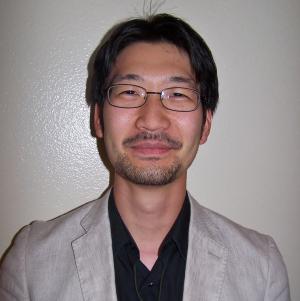
A major task that our students will have to undertake is to create a sustainable way of life. To do so, they need to be able to understand how to analyze themselves, especially how their behaviors and worldviews are connected with social and environmental effects. To our misfortune, this is also the living generation with perhaps the least ability to self-analyze, to patiently plot out long-term goals, and to withstand the psychological pains of self-transformation. To meet the demands on this generation for sustainability, I made metacognitive tasks central to an introductory course on world religions, with a personal emphasis on sustainability. I was surprised at the degree of resistance and struggle at metacognitive tasks, and I have recommendations to improve success. Context and Problem I teach at a racially diverse R1 state university with some unique courses on world religions. Namely, we teach an introductory course that is offered statewide and that is reciprocally accepted at colleges across the state. In addition, there is a general course with more students and fewer credit hours, a traditions course for humanity students and religious studies majors, and a graduate-level course that examines the concept of “world religions.” For the introductory course, faculty are free to take their own approach that would appeal to humanities and non-humanities majors alike. I chose to reorganize my version around sustainability. I am in some ways following the lead of scholars like Mary Evelyn Tucker who advocate that we integrate environmental concerns into our classrooms and scholarship. But, more fundamentally, I am expanding my work on racial minority communities—Asian American, African American, and Native American—who are increasingly concerned with the coupling of social justice and environmental racism. Thus, my goal of centering a world religions course sustainability has foundations in the pressing issues of social and environmental degradation that my racially diverse student body are confronting in their communities. Since students are, or will soon be, facing these great problems, I thought that they would be willing to take on relatively simple challenges of self-evaluation. I was both right and wrong. I created course assignments that required students to analyze themselves and the natural world around them utilizing metacognition. Metacognition—in its simplified definition of reflection and “thinking about thinking”—is natural for the religious studies classroom because it undergirds common practices in religion. However, its formal definition in cognitive science and pedagogy has not been commonly applied in our field. As psychologist Anastasia Efklides articulates, “metacognition is a representation of cognition that provides awareness of cognition” (138). Largely in pedagogy, this image of cognition provides students the ability to see why they should know information and how they will be tested. When students become conscious of where information sits in this “image,” they can adjust study habits to be more efficient test-takers and with practice become proactive learners who “seek solutions to any problems they may encounter” (McGuire, 16). Skill in metacognition can be incorporated into lecture, class activities, exam preparation, and post-exam assessment. Tests can focus on one’s skill in knowing where information sits. Additionally, as my Georgia State colleague Molly Bassett has done, metacognition can be incorporated into multiple-choice exams in religious studies (Bassett). In these ways, the practice of representing cognition can be incorporated to nearly any class, and can help students develop more control over course content and help provide instructors a better sense of how their students are learning. Upper-division courses can utilize metacognitive tasks to reexamine the same topic or idea at multiple points in the semester, thus allowing the class to see how they are applying different processes of interpreting the same thing and deriving different results. Introductory courses do not have this luxury of focus. Instead, I had students examine the only consistent object through the semester: the students’ selves. I broke the self into two sides—how one sees oneself and how one sees the world—and detailed religious conceptions of the self and worldviews. I accordingly created two assignments and a final paper to bring these two tasks together. The first metacognitive assignment is called the Creature Journal. It is an observation journal, like scientists, observe plots of land over time, but modified for the religious studies classroom. Based on research supported by Wabash, I found an expansive definition of “person” in indigenous cultures that includes animals, plants, and natural features like mountains and lakes (Norton-Smith). Students may choose any “person” (which I replace with “creature”) as long as they can observe it throughout the semester. For each journal entry, they take on the worldview of a different religion and write down their observations. The trick is that even though they are observing something else, they are really discovering their selves because they get to vicariously be someone else for the period of the assignment. For example, in one memorable creature journal, a student observed a tree with the lens of Hindu karma and reincarnation, and saw that the tree swayed like a person in the breeze. In fact, a common comment from students is that they have never taken the time to see a nonhuman as a living thing and have never observed the lack of care it receives. Thus, by looking outward they learned to form an image of their interconnection or lack-thereof to other “creatures”; this practice also conforms to the more formal definition of metacognition. The second assignment is called Reflections. To help students form an image of their selves to reflect upon, I created a diagram of the construction of worldviews and a model of a cycle of learning and transformation. With these two images, students are asked to reflect upon worldviews and how they transformed. To simplify the assignment, each part of the assignment takes one step in the cycle and students choose one aspect of their worldview to analyze. The aspects are drawn from the diagram of worldviews, which depicts major categories, like values, beliefs, experiences, and senses, that undergird worldviews. The aspect of the worldview is any part of any category, like the belief that “everything happens for a reason.” In the Reflections students consider where the aspect came from, what it means for them today, and how it might transform in the future. The trick for the Reflections is that the even though they are analyzing their selves, they are really discovering how they see the world. For example, one student discussed how charity became central to her core values. When the student was in middle school, her family became involved in a charity that distributed clothes to the homeless, and now in college, she cannot see her life without a significant dedication to charity. In this way, through the assignment, she practiced analyzing her self and formed an image of the self that is connected to values, a habit of giving, people in general, and her family. In the final paper, which brings together the two metacognitive assignments, this student was able to compare her own history and conception of charity to the worldviews of other religions. Thinking-about-thinking thus enabled the student to understand that traditions shape religious worldviews and individual experiences reinforce particular aspects of religious worldviews. The final paper also asks students to consider how an aspect of their worldview assists or deteriorates sustainability. In this example, the practice of charity towards the homeless aids social sustainability, since it upholds the stability of society, and environmental sustainability, since it reuses clothing and household items that otherwise would go directly to landfill. Consequently, the student was able to connect her practices to society, the environment, and religious worldviews. In such ways, metacognition can be an important vehicle for developing systemic, multileveled thinking that is essential for reforming one’s relationships in order to create a sustainable world. Struggles and Advice While a few students leave with dramatic transformations in understanding their selves and worldviews, along with an experience connecting complex current issues to the study of religion, a significant portion of the students resisted metacognitive activities and assignments. I anticipated a little resistance because metacognition is unusual for courses, but I hoped that the desire to work on a significant issue of their day and Millennials’ narcissistic tendencies would make up the difference. This generation—the Millennials—are notoriously narcissistic (Hoover; Howe & Strauss), so I hoped that spending the semester focused on themselves would be natural and productive. The problem is that narcissism also entails fragility, and self-analysis threatens the stability of the self (which is an important step of self-analysis). As a result, students consistently asked why they needed to think about themselves, and I developed a few ways to mitigate these issues. Pointing externally, students complained that course information was not being provided. To counter this, I consistently provided study guides at the start of each unit of the course. I also utilized concepts in class lectures, discussions, and activities, and the assignments required the use of course concepts. One student objected that the course focused too much on my own interests and not enough on religion. To meet this issue, I explained thoroughly several times throughout the semester that according to department practice each professor teaches this course by centering their own expertise and using it as a glue to introduce religions to students with diverse academic interests. Moreover, every reading and lecture was on religion. I also anticipated the concern over focusing on a theme that may seem too based in my own politics. To mitigate this concern, I emphasized the ethical and moral argument that environmental and social degradation is a problem for all the world’s peoples and that religions’ collective wisdom can alleviate the impact of our collective follies. The study guides, assignments using course concepts, clear goals for the course, and ethical call for self-evaluation all helped to address student anxiety with metacognition and self-analysis. Overall, I found that, in addition to the practical adjustments just outlined, there is a need to consistently and frequently encourage and relieve students as they take on metacognitive tasks. I keep assignments open to different levels of self-analysis and self-disclosure, so students can choose the level of sensitivity or superficiality with which they are comfortable. I model self-analysis by alternating humor and seriousness, light self-deprecation and deep self-critique, personal stories and scientific data on the impact of my own choices. With student preapproval, I also highlight interesting and solid work done by the students. I found this multilevel honesty and support brings students to feel strong, especially those who want to become responsible citizens of the world as well as those who had already taken on responsibilities in their lives, such as students with considerable family commitments, dedications to communities, and who have taken on military service. Given the pushback by anxious Millennials, the conscious and consistent efforts to alleviate anxieties, and the potential benefits of incremental self-transformation and sustainability, I feel it is worth it to tackle metacognition and sustainability in the religious studies classroom. My numerical validations have so far taken a hit, but the qualitative value of self-confident and self-evaluating students self-sacrificing for the good of the world outweighs the costs, in my opinion. References and Other Sources Bassett, Molly H. “Teaching Critical Thinking without (Much) Writing: Multiple-Choice and Metacognition.” Teaching Theology & Religion 19, no. 1 (January 2016): 20-40. Efklides, Anastasia. “The New Look in Metacognition: From Individual to Social, From Cognitive to Affective.” In Metacognition: New Research Developments, ed. Clayton B. Larson, 137-51. New York: Nova Science Publishers, 2009. Hoover, J. Duane. “Complexity Avoidance, Narcissism and Experiential Learning.” Developments in Business Simulation and Experiential Learning, 38 (2011): 255-60. Howe, Neil and William Strauss. Millennials Rising: The Next Great Generation. New York: Vintage Books, 2000.
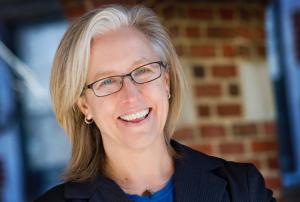
Back in the summer of 2017, these Deans of theological schools from the US and Canada set out on a journey of building a community of trust, respect, friendship, and collaboration to work on some of the most challenging issues facing theological education today. Comprising a religiously and geographically diverse group of leaders, the Wabash Deans Colloquy has embraced over its two, four-day sessions (Summer 2017 at Wabash College; and Spring 2018 on Mustang Island, TX) the signature Wabash Center for Teaching and Learning in Theology and Religion combination of rigorous collaborative peer learning with community building and play in order to navigate the boundaries that divide us religiously (Evangelical, Roman Catholic, mainline Protestant, and Christian and Muslim), and the contemporary institutional instability that often seems to foster a spirit of competition rather than collaboration among our schools. On this journey we explored the alignment of Deans' vocations with the mission of our schools, probed possibilities for ways our teaching and learning can promote the common good in our different contexts, and considered how best to equip ourselves for academic leadership in curriculum revision, assessment, and faculty and student formation in times of intense cultural and religious change. We've shared in prayer, meals, card games, deep conversation, hot putt-putt golf (like hot Yoga, but golf), dolphin watching, and collaborative writing with one another. Formed now as a collegium, our voyage continues. Just what the future holds is not certain for theological education in any of our contexts, but no matter the challenges or opportunities we face, we are thankful that one thing the future holds is the promise of traveling in such good company.
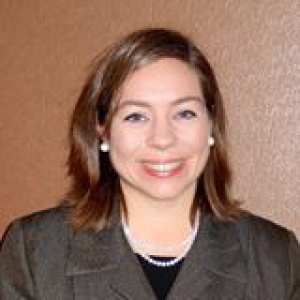
Interrupting Institutional Patterns of Trauma (Non)Response Moving is difficult. In the past twenty years, I’ve moved fifteen times and I am in the middle of another move right now. Some moves were by choice and others due to unexpected circumstances. Moving is laborious–packing, reimagining space, anticipated and unanticipated expenses, unpacking, broken pieces of cherished material items, revisiting old stuff, exposing the insides of a home to anyone who offers to help at a time when one needs a lot of help, communicating address changes, responding to the questions that arise: now why are you moving? In the academic life, moving takes valuable time away from research and good teaching, service and self-care, thinking and writing. At least three times at three very different parts of my life, I have been offered the opportunity to move when faced with a potentially traumatic set of circumstances. Someone in the building is threatening? You can move to another building. Something happened that violated the safety of your placement? You can move to another placement. Something in your classroom is disruptive to your teaching? You can move to another classroom. The subtext is often “deal with it or move, nothing is going to change here.” And I have found myself responding on a visceral level: I’m Not Moving, You Move! I’ve also seen this response given to colleagues and students. Institution is toxic? Go back on the job market or switch schools. Toxic roommate? Move to a different dorm. Toxic work environment? Move to a different floor. Internship is not holding up its part of the bargain and supervisor not supervising? Switch internship placements. Instructor made an inappropriate comment that made a student uncomfortable? Move the student to another section. The subtext remains “deal with it or move, nothing is going to change here.” And still, I hear that visceral voice: I’m Not Moving, You Move! Moving in order to leave a toxic situation can be life-saving and should not be minimized. In my pastoral care classes, for example, I teach students to partner with local domestic violence shelters to know whom to call to help future parishioners, clients, and colleagues be ready to leave (seminary doesn’t train pastors for this, so they need to partner). The underreported statistics are clear: every institution has some history or current instances of violence and, as a leader, you are identified as a safe or unsafe person to consult for help. Sometimes students can’t believe that it can take an average of seven attempts to leave a dangerous relationship of intimate partner violence. Sometimes students say, why can’t they just move? Survivors in the community know the answer: moving is difficult and intertwined with all kinds of complexities. Moving itself can be life or death. At worst, immovability advocates don’t just tell more vulnerable persons with the least moving expense resources to move, they say, “move or die.” In one of the FaithTrust training videos, an interviewee who left an intimate partner violence relationship and was the pastor’s wife, said that she could have stayed, but then she’d be a dead pastor’s wife.[1] Moving can be life itself, but who is asked to move? From an interpersonal to a systemic view, why do systems foist all the moving on the more structurally vulnerable party, often requiring nothing of the system? Again, we know the answer--moving is difficult. According to Sarah Ahmed’s research on complaints in higher education around harassment and diversity-related infractions, it is the nature of institutions to put up brick walls where they don’t want to or can’t imagine moving.[2] All the packing, unpacking, exposing, digging up old things, hidden expenses, phone calls to change over all the bills, address changes, explaining the move–in the best of cases, it’s a lot. In more dire situations, it can be so emotionally draining to move. Why can’t the system take on more moving responsibilities? Why can’t the toxicity makers be made to move so that everyone can live in a less toxic environment? Someone in the building is threatening? Make the building community safer. Revisit policies, revising and setting up new accountabilities. Something potentially threatening is happening in your placement? Take the placement off the list for now and rethink training, supervision practices, and accountabilities for placement supervisors. Something in your classroom is disruptive? Increase reporting and responding channels so that the classroom supports learning and thriving. Instructor made an inappropriate comment that made a student uncomfortable? Believe the student and move the instructor, providing training and counseling for all parties. Use the policies in place for this situation or create them. Somedays I think I never want to move again. I don’t want anything else to break by accident. I don’t want to fill out another mail forwarding request and hope I remember to move everything over to a new address, finding out months later what I forgot or not finding out at all. You’d think I’d have all this down by now, but moving is exhausting. I have experiences of having been asked to move without any movement on the part of anyone else who could have moved and helped the situation immensely. Other times, it’s clear that I am part of a system that rewards immovability and I must remember the importance of moving together and then move. But I do like the experience of having moved because having moved can restore and create possibilities for new life. Where in your life, work, and institution can you see needs for such restoration? Where in your institution are more minoritized or more vulnerable community members being asked to move and change while the system remains unchanged? What can you do to influence systemic change to flip the script: You shouldn’t have to do all the moving, I’ll move too? [1] See www.faithtrustinstitute.org [2] Ahmed, Sara, Living a Feminist Life, Durham, NC: Duke University Press, 2017
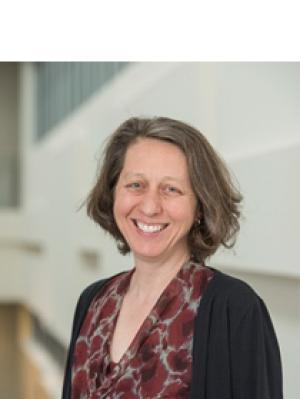
“Spiritual Companioning for Ministry” is a course I recently taught for the first time for a colleague when she took a well-deserved sabbatical. She shared her syllabus and course plan with me and told me that she usually taught it to about 12 students which worked well for the topic. A couple of weeks ahead of the semester, I realized that I was going to have to make some major changes fast; close to 40 students had registered. The class involves a lot of sharing, often around intense topics, in order to become skilled in responding to the issues that surface when companioning others on their spiritual journey. I needed to design a way for so many students to have the ability to engage the texts as well as form a confidential and trusting learning community for the many discussions of this course. The key was to build effective small groups, which we called learning teams. Because Catholic Theological Union has students from around the world we used part of the first class to divide students into learning teams that allowed for diverse voices in each group. During that first class, we also discussed small group dynamics and the learning teams were invited to develop “ground rules” or covenants they wanted to keep with one another. (Examples of covenant points include confidentiality, cell phone use, planned facilitators etc.) The learning teams soon became the cornerstone of the class. They provided a rich framework for practical experience and integration of course material. Community within each learning team was fostered in a number of ways: The classroom was rearranged so that each learning team had a table to sit around. Tables were spaced so that intimate conversations could take place and other groups were not too close. This physical arrangement set the tone for the atmosphere I was hoping to foster in the class. Each session included discussions within learning teams. Discussion prompts might have been for groups of two or three or discussions for six, but students were always in discussions with someone from their learning team. This allowed for a mix in the types of discussion but kept discussions within the learning teams to build relationships throughout the semester. Each class began with a reading assessment where learning teams would discuss the readings and work through an assignment of questions or activities about the readings. This encouraged each student to stay on top of the readings, as their small group would expect their participation in these weekly conversations. Students completed “noticing journals” on our online D2L course management system. They were asked to post brief responses to prompts such as “Discuss a time this week you talked with someone about prayer” or “Discuss a time this week you noticed someone talking about or discerning a decision.” These posts would be read and responded to by learning team members online. One of the gifts of the online discussions was that students who were more hesitant to participate in the larger class setting had an easier time participating in the online forum. Throughout the semester, the worksheets on the readings, the noticing prompts, and in class discussions were more involved. Students engaged one another on progressively deeper levels. I spent less time engaging them in a large group but floated around the room checking in on their discussions, answering questions, and making notes for the next class’ lecture based on what I was noticing in the teams. During the semester, several students experienced serious illness or a death of a beloved family member. The learning teams provided an intimate hands-on forum for spiritually companioning one another in a way that the larger classroom could not have handled. On the last day, I brought in “talking pieces” that represented various discussions from the semester and invited students to “end well.” Learning teams were encouraged to select a talking piece and give each person in their group a challenge, a commendation, and a blessing. The learning teams took their time with this session; some continued well beyond the allotted class time. The sharing was deeply emotional and confirmed that learning teams within a large class provided the framework that modeled and built companionship in a profound way.
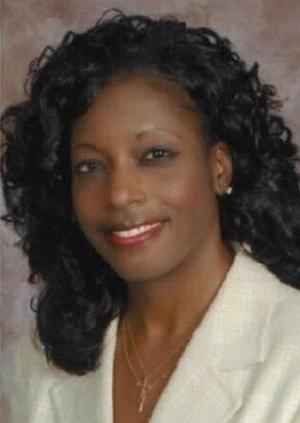
How do theological educators help students face the constant reality of failure? Picture this scenario: a second career divinity student suffers health and financial troubles that impede her studies. The impact of these issues revives past psychological wounds. Enduring this morass of difficulties leads to the student’s failure in several class assignments. Further, the weight of the unresolved emotional burdens, partly resurrected through themes in classwork, results in crippling pessimism, angst, and depression. The student begins to conclude that dropping out of school is the only solution despite the negative ramifications this decision will have on her career goals. What are the pedagogical possibilities for instructors and students with regard to issues of failure both in and out of the classroom? In addition to keeping students aware of campus and local health resources that accommodate various needs (including psychological and counseling services, for instance) instructors can develop a helpful methodological ethos around success and failure in the classroom. As the prophet Jeremiah testified, “You shall say to them, ‘Thus says the Lord: When people fall, do they not get up again? If they go astray, do they not turn back?’” (Jer. 8. 4) Pedagogical strategies for encouraging students to confront and overcome failure begin with instructors modeling a lack of fear in this regard. Teachers are not perfect. Nor are lectures, teaching plans, or classroom activities executed perfectly at all times. Responding to hiccups in real time classroom settings indicates there is a way back from past failures as well as traumas that may be at the root of student underperformance. This models effective coping strategies for students. Further, it is helpful to assist students to find ways of processing how the legacy of trauma, both collective and personal, affects learning. Part of the impact of trauma is the defensive posturing in individuals and societies that tends to obscure the origins or initial events that contributed to experiences of upheaval. Theological education, which assists in the dissemination of epistemologies based in critical inquiry, enables students to interrogate traditional and received interpretations, even if, in some cases, only to validate them. Just as the use of critical inquiry in coursework can provide opportunities for facing themes and opening pathways related to trauma in social experience, so can pedagogical strategies, structured in this framework, hone methodological skills of survival and success for students. Developing opportunities for students to enact these strategies also enables instructors to assess the usefulness of particular methods and modes of presentation. The familiar mantra, “If at first you don’t succeed, try, try again,” was originally written to encourage students in the educational process. Indeed, teachers can develop specific strategies to help students face problems in classroom performance. These include not only acknowledging difficulties when they arise but also incorporating tactics that analyze obstacles in classroom exercises. For example, tracing patterns or connections, dissecting complications, wrestling with incongruities, working through potential solutions, and testing their implications in classroom exercises model the confrontation skills necessary for overcoming failure. Built on the paradigm of evaluation, critique, and re-evaluation, such teaching methods can help develop the kinds of students who encounter defeat, yet refuse to fail.
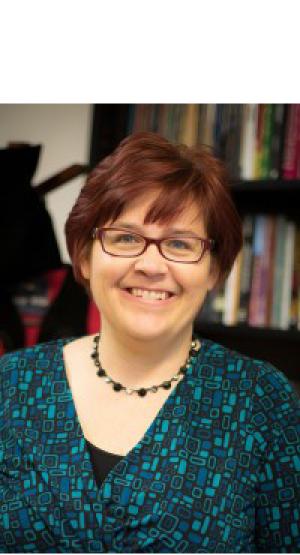
Emily Dickinson said, "Hope" is the thing with feathers - That perches in the soul - And sings the tune without the words - And never stops - at all- Yet hope is not confidence This bird--frozen in flight and in death--evokes for me both the hope Dickinson speaks of and the precarity that so many feel in these uncertain times. Many theological school deans lead in contexts where success and failure, gain and loss lie close together. The landscapes of education, church, and society have shifted radically under our feet. The future of many institutions cannot be discerned. There are greater forces at work--some benign, some destructive, all-powerful, few predictable. Attempts to fly might fail and no one, in particular, will be at fault. Paradoxically, theological educators are daily in the business of nourishing hope, of remembering, deepening, and empowering the vision of God’s radical love for humanity and creation ever-unfolding in the world. There is no shortage of need or demand for this work. And yet deans are doing a disservice to that work if an institution and its people are blind to the realities and risks before us. Cultivating collective hope means facing together the risks with creativity, candor, and courage. As Ernst Bloch has said, “hope is the opposite of naive optimism . . . It is critical and can be disappointed.” This bleak and beautiful image captures for me the work and commitment of theological education in these times--so precarious and yet soaring with possibility.
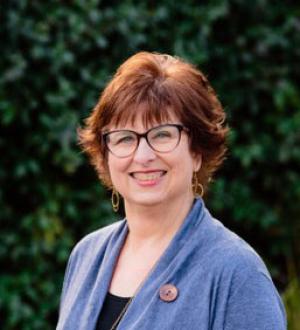
Walking the beach, I am caught by the ordered chaos of blue and white shards oriented around a large center shell. What a great image of centered-set thinking, I muse, and pull out my phone to capture the image. Isn’t a part of the deans’ job to keep pointing to the center? To guard not the boundaries but the heart? In the midst of shifting cultural forces, the changing nature of the institutional church and theological education (all our usual suspects), we are committed to a common mission, living a common life, journeying toward a common goal. But a poet reminds me that “things fall apart; the centre cannot hold.” And the words trouble me because I long for the center to hold. What I don’t see, until I bring the captured image up on my screen, is the bright luminous reflection offering me a glimpse of another reality to which the whole enterprise is oriented. And I think, yes, it is true. The deans’ job is to keep orienting toward the center and fortunately, we do not do it alone.
Categories
Write for us
We invite friends and colleagues of the Wabash Center from across North America to contribute periodic blog posts for one of our several blog series.
Contact:
Donald Quist
quistd@wabash.edu
Educational Design Manager, Wabash Center
Most Popular

Co-Creating an Online Education Plan
Posted by Samira Mehta on June 10, 2024

Are You Okay?
Posted by Nancy Lynne Westfield, Ph.D. on October 1, 2025

Cultivating Your Sound in a Time of Despair
Posted by Willie James Jennings on June 4, 2025

Plagiarism as Gaslighting in the Time of Artificial Intelligence
Posted by Brian Hillman on September 8, 2025

Judged by Your Behavior: Talk is Cheap
Posted by Nancy Lynne Westfield, Ph.D. on June 1, 2024